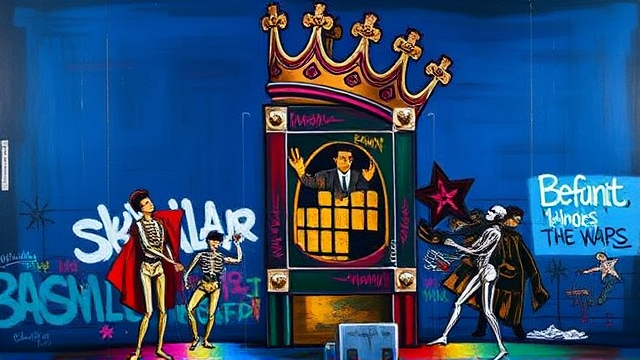Basquiat's $45 Million Painting Debuts at Auction
The art world is holding its collective breath as a monumental 1981 canvas by Jean-Michel Basquiat, a piece so foundational it was included in the artist's very first solo show in New York, makes its long-awaited and nerve-wracking debut at auction with a staggering estimate soaring toward $45 million. This isn't merely a sale; it's the cinematic climax of a narrative that began in the gritty, graffiti-scarred streets of early 1980s Manhattan, a story of raw talent exploding from the underground into the pristine white cubes of the gallery system, and it demands a critic’s eye to unpack its profound symbolism within the broader arc of both Basquiat’s tragically short career and the often-brutal economics of the contemporary art market.To understand the weight of this moment, one must first step back into the specific, electric atmosphere of that first solo exhibition, a crucible where the young, Black artist from Brooklyn, already a downtown phenom for his SAMO© graffiti, was formally anointed by the establishment, his work—a volatile, brilliant fusion of primal mark-making, coded text, and a searing social commentary on race, power, and history—suddenly transformed from subcultural artifact into blue-chip commodity, a transition as dramatic and fraught as any in modern art. The painting itself, likely teeming with his iconic crowns, skeletal figures, and fragmented poetry, operates not just as an aesthetic object but as a palimpsest of that era, a relic from the moment before the art world’s machinery fully consumed him, and its appearance now forces us to confront uncomfortable questions about legacy, value, and the posthumous canonization of an artist who so fiercely critiqued the very systems of wealth and ownership that now vie for his work.Expert commentary would be essential here; one can imagine curators whispering about its impeccable provenance and flawless exhibition history, while market analysts coldly calculate its investment potential, comparing it to the 2017 sale of the record-shattering ‘Untitled’ skull, a transaction that irrevocably shifted Basquiat from mere art star into a global financial asset class. The consequences of this auction are multifaceted: a successful hammer price would further cement his status in the pantheon, placing him firmly alongside Picassos and Warhols in the rarefied air of nine-figure sales, while simultaneously inflating the entire market for his contemporaries and influencing how museums and billionaires curate their collections for decades to come.Yet, there’s a poignant, almost tragic irony at play—this fierce, anti-establishment voice, this chronicler of urban struggle and systemic inequality, has become the ultimate trophy for the global elite, his work a lever in the vast wealth-preservation strategies of the very one percent he so vividly depicted in his art. The narrative isn't just about the paint on the canvas; it's about the relentless engine of the art market, its capacity to absorb dissent and transform radical energy into a safe, highly liquid store of value, a process that this $45 million debut makes starkly visible. As the gavel prepares to fall, we are left to watch, captivated and perhaps a little complicit, in this grand, glamorous, and deeply analytical spectacle where culture and capital perform their most intricate and revealing dance.
Latest News
In the grand, unpredictable symphony of popular music, a song's legacy is never just about the notes on the page or the voice in the recording; it's about the
34 minutes ago0 comments
The air in Kobe’s Glion Arena crackled with a rare, almost archival energy on that October night, a feeling that transcends the usual stadium roar—this wasn't
44 minutes ago0 comments
In a move that echoes the delicate diplomatic choreography more commonly seen in United Nations assemblies than in song contests, the European Broadcasting
4 hours ago0 comments
The venerable halls of Christie's, a temple to art and antiquity where whispers of gavels have consecrated the exchange of cultural totems for generations,
5 hours ago1 comments
The needle hasn't just moved; it has been ripped from the groove and cast in solid gold.
7 hours ago0 comments
In the grand, often predictable theater of pop music releases, where artists frequently trade artistic ambition for algorithmic certainty, Louis Tomlinson’s
7 hours ago1 comments
Let’s get one thing straight right off the bat, darlings—no, these gummies do not actually contain cornbread, which, let’s be honest, would be a truly wild
7 hours ago0 comments
In a move that sent the gossip-sphere into a full-blown frenzy, Georgina Badell recently took to her social media channels, not to address the swirling rumors
8 hours ago2 comments
It’s quiet here...Start the conversation by leaving the first comment.
